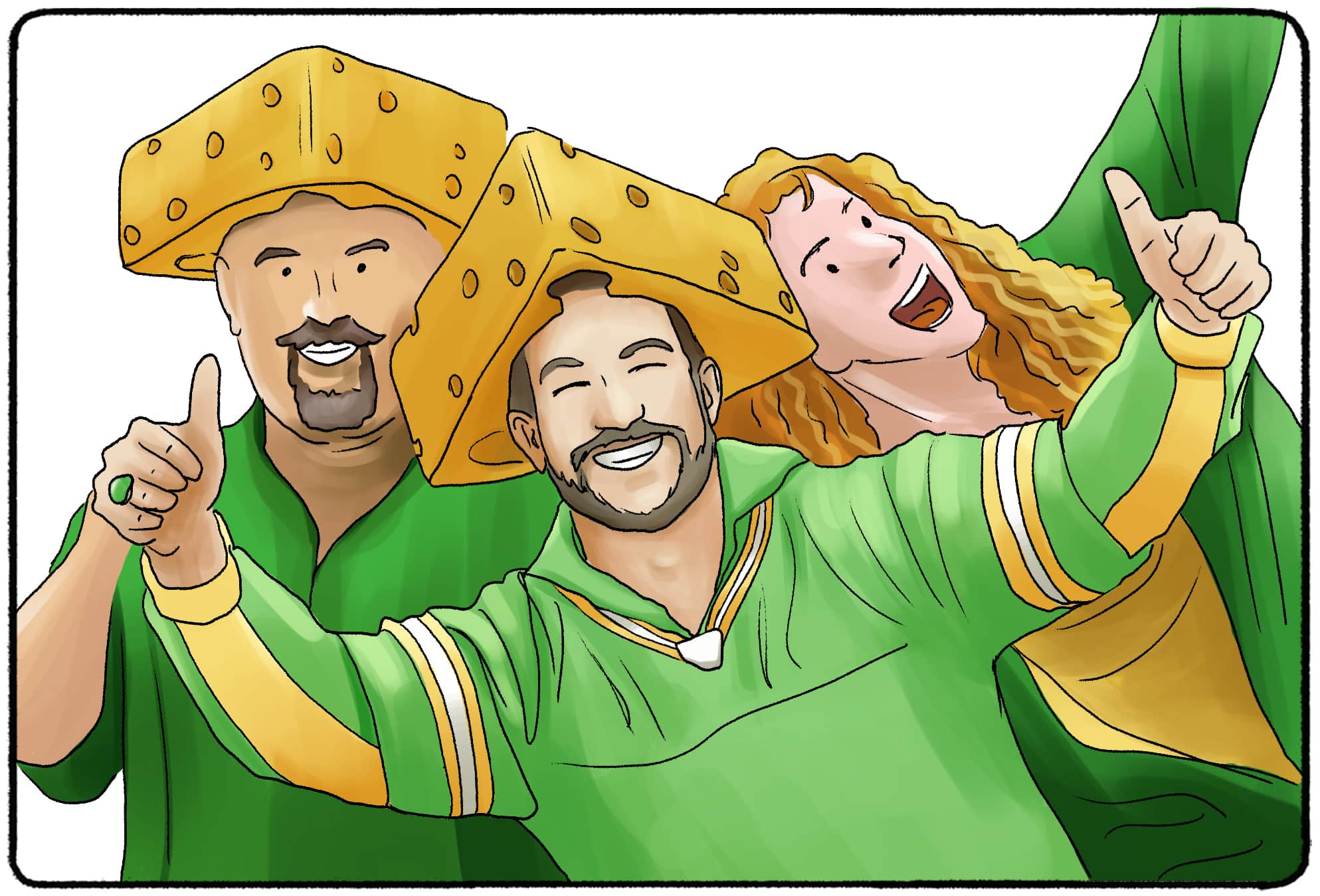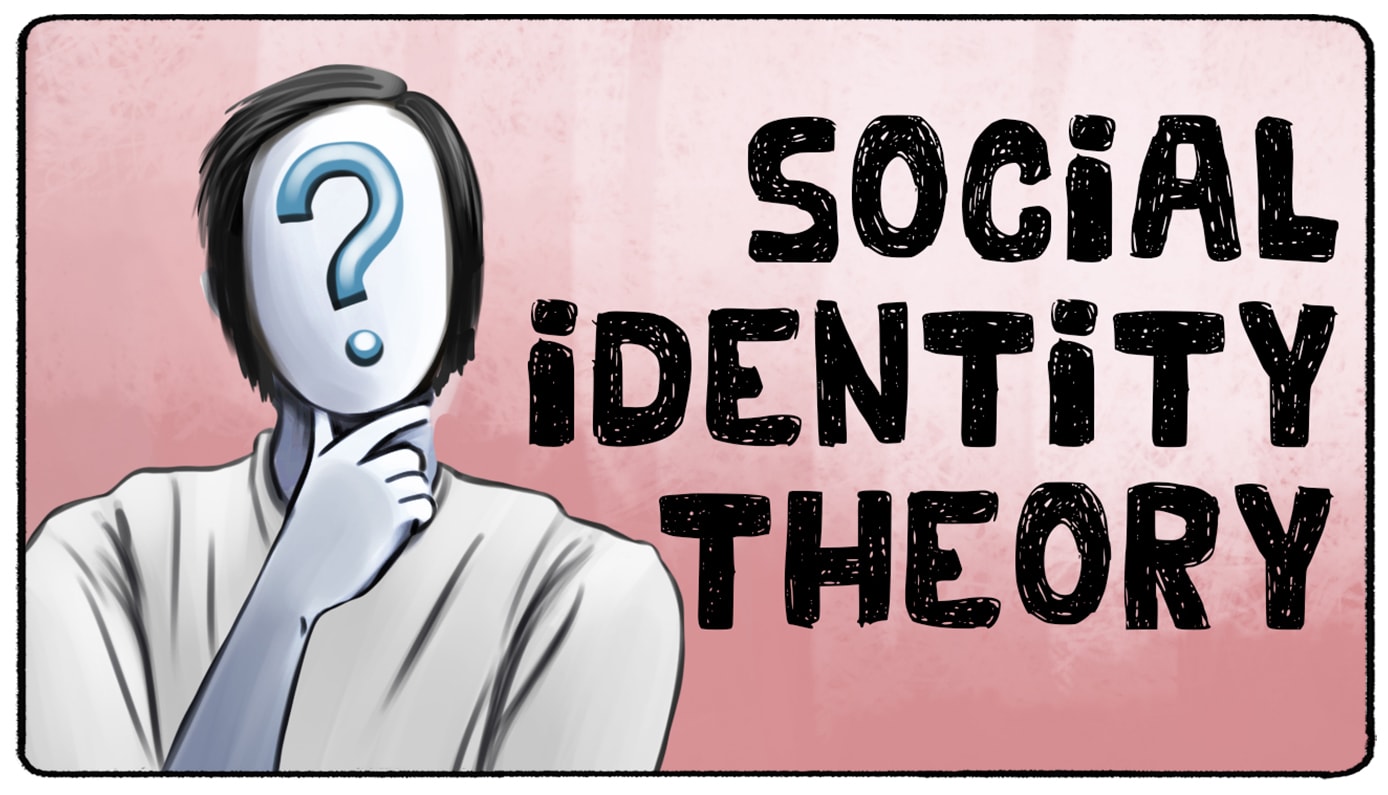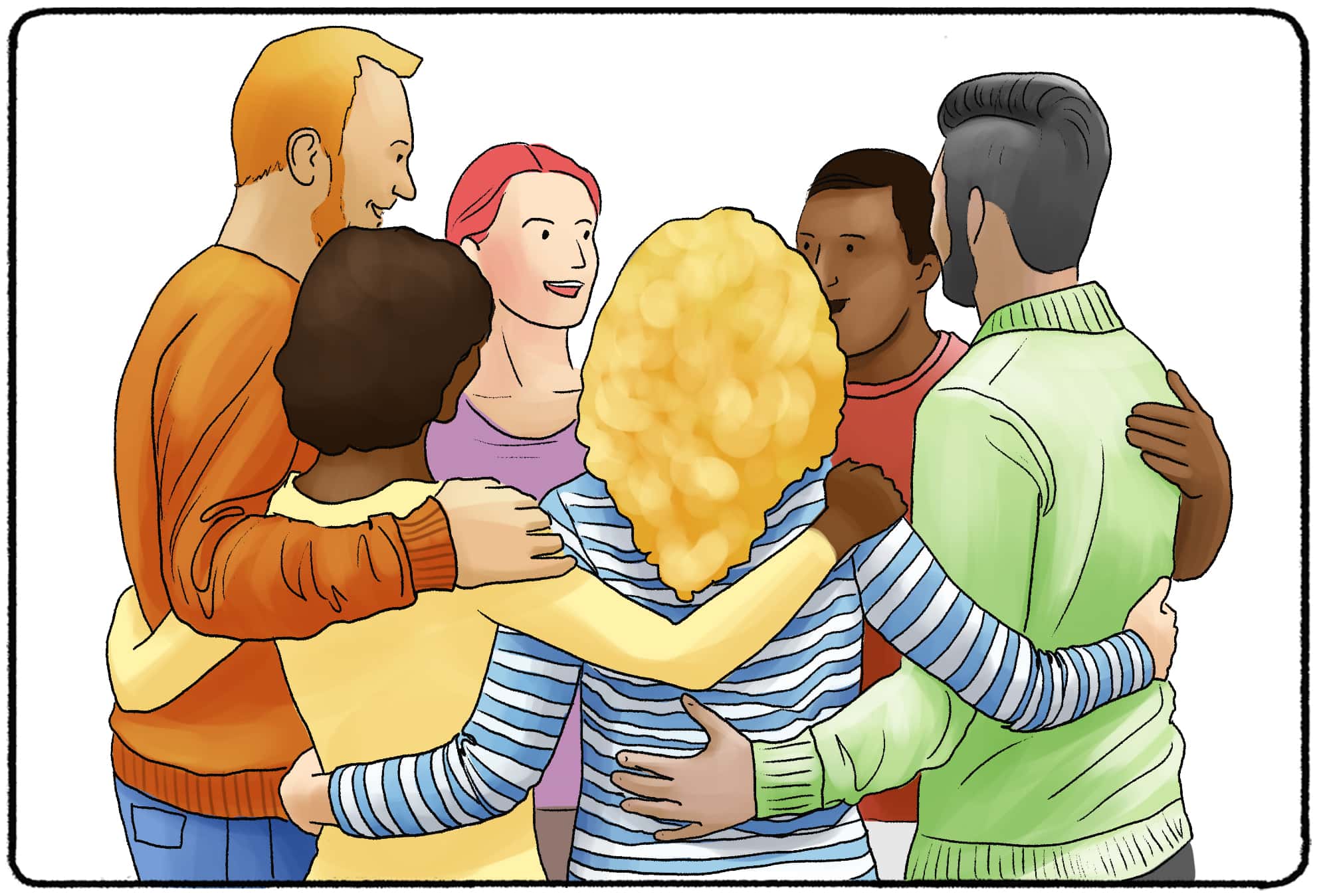How does it feel to be a sports fan and see someone wearing a jersey supporting your team? It feels pretty nice, right? Or maybe you’re traveling abroad and see someone in a hat that says they’re from the States or even your hometown. Wow! It’s natural to feel more comfortable or trusting when you know someone similar is around.
And what happens when you see someone from a rival sports team? You might not feel so comfortable.
Why does this happen? One explanation is an idea called ingroup bias.
What Is Ingroup Bias?
Ingroup bias, or ingroup favoritism, is a bias in which people tend to favor people who exist in similar groups as them. These groups could be formed by gender, race, ethnicity, or a favorite sports team. If someone is in our "ingroup," we are more likely to trust them.

Ingroup bias may shield our judgment when we judge others, distribute resources, or make other decisions. This can be an uncomfortable topic to talk about, especially when it involves “groups” like people of a certain race, ethnicity, or gender. But the more we understand our implicit biases, we cannot overcome them and create a more fair world for everyone.
We tend to overwhelmingly favor people who are similar to us and who belong to these similar groups. However, ingroup bias is not just related to thoughts and preferences. We are also more likely to act if the actions are likely to favor members of the ingroup.
Of course, this means that we are more likely to look down on people who exist outside of these groups. But I talk more about that in my article about outgroup bias.
What Makes Up an "Ingroup?"
Any of the following factors could bind a group together to form an "ingroup":
- Race
- Neighborhood
- Sexual orientation
- Gender identity
- Place of employment
- Preferred sports team
- Religious beliefs
- Nationality
- Age/generation
Rather than consciously forming "ingroups," structures may also simply form "outgroups" that isolate a select group of individuals. Anyone who is not considered part of the isolated "outgroup" is automatically part of the ingroup.
Similar Concepts in Psychology

If you turn on the news, ingroup bias is pretty easy to spot. It’s not the most hidden ideas in the world of social psychology. Ingroup bias isn’t exactly a standalone concept, either. Other theories support the idea of ingroup bias.
Social Identity Theory
One theory is Social Identity Theory. Henri Tajfel coined the term in the 1970s after conducting a series of experiments on how we form groups and our individual identities. It’s impossible to talk about ingroup bias without talking about Social Identity Theory.
This theory breaks down the process of developing an identity into three parts:
- Categorization
- Identification
- Comparison
During the comparison stage, we compare our group to other groups. We compare ourselves to people in those other groups. And you might not be surprised to learn that when we make these comparisons, we often favor ourselves and people in our ingroups.
Generalized Reciprocity
Another theory supports the idea of ingroup bias, but exists outside of the world of social psychology. Generalized reciprocity is an idea that also exists both in economics and anthropology. Reciprocity occurs when one person exchanges goods and services for another person and gets goods and services of similar value in return. It’s like when you buy your friend a coffee, not to treat them, but with the unspoken agreement that she’ll get the next coffee later.
Reciprocity is most likely to happen in our tightest “ingroups.” Our family and close friends are the ones that we can trust to buy us a coffee later.
Why Does Ingroup Bias Occur?
Further studies have tried to pinpoint at what age people start to experience ingroup bias. The answer isn’t always clear due to the many ingroups and outgroups a person interacts with in life. But one study showed that boys could show ingroup bias as young as 3 years old.
Does this mean that we should stop trying to reverse the effects of ingroup bias? Absolutely not. Ingroup bias is not a fixed mindset. Some studies show that people may display more or less ingroup bias due to external factors. In one study, men displayed ingroup bias toward people of a similar political party during some parts of the election cycle, but cooled off during others. Their decisions may not have had to do with biology or neuroscience. The presence of tension or conflict may have been more influential.
Everything from media, to cultural shifts, to stress levels can factor into how tightly ingroup bias influences our decisions and behaviors.
Examples of Ingroup Bias
Ingroup bias happens all the time! Now that you know about it, you may start to spot yourself using ingroup bias, too! Do not worry. This is a normal part of life - our brains do this without us knowing that it's happening!
Job Recruitment
A job recruiter is searching through resumes. The first resume is decent. The candidate has five years of experience in the field and seems to be competent enough to handle the job. They put the resume in the "maybe" pile. Next up is a candidate who has four years of experience, but the recruiter sees something interesting at the top of the resume. The candidate went to Temple University! The recruiter also went to Temple University. Without thinking, the recruiter puts the resume in the "yes" pile. (And the third resume? Penn State alumni. The recruiter rolls their eyes, because of the rivalry between the two schools, and puts the resume in the "no" pile.)
Sports Fans
A Yankees fan is driving on a busy highway. Traffic is backed up, and everyone is trying to get into the right-hand lane so they can exit on the highway. A car cuts the driver off, and the driver blares on their horn. Shortly after, the driver sees a car trying to inch its way into the lane. The car has a Yankees bumper sticker. The driver waves the other car over and lets them go ahead.
Kids at School
Making friends at school is hard. The new kid in school feels like they are very excluded. No one wants to sit with them at lunch! As the kid walks through the cafeteria, looking for a place to sit, they look very sad. Fortunately, they are carrying a lunch box with Zelda on the front. One of the kids in the cafeteria is a huge fan of Zelda. They play all the time! So when the new kid reaches their table, they offer them a place to sit. No other kids like video games, which has made this kid at school a member of their own "outgroup." Together, the two kids form an "ingroup" of their own.
Can you think of similar examples where you have been in the ingroup and the outgroup? Being in one position feels great...the other, not so much.
Positives of Ingroup Favoritism
Ingroup bias isn’t all bad. Think back to the sports jersey example I mentioned at the beginning of the video. You could see a complete stranger wearing that jersey and naturally give them a smile or a nod. One study showed that when people saw similar sports fans getting injured, they were more likely to feel empathy, even if they didn’t know the fans personally. We are more willing to help people in our “in-groups,” even when they owe us nothing or we’ve had no interactions with them previously.

This type of bonding is necessary for our well-being. Maslow’s Hierarchy of Needs lists “belonging” as a base-level psychological need. It sits right above basic needs like food, water, shelter, and safety.
When we recognize people who are in our “ingroup,” we feel that sense of belonging. Because we naturally trust or appreciate fellow ingroup members, we feel trusted and appreciated in return. We get all of these good feelings just from seeing someone in a sports jersey, college sweatshirt, or American flag hat.
Drawbacks of Ingroup Favoritism
Unfortunately, if there’s an ingroup, there has to be an “outgroup.” Our tendency to act in a way that benefits the ingroup may result in taking resources from the outgroup. This idea goes back to the Social Identity Theory, which may have been developed out of primal needs to survive on limited resources. By taking or distributing resources, like food, housing, or jobs, based on ingroup bias, people may be leaving out those in outgroups.
How to Reduce Ingroup Bias As An Individual
As you read through the definition and examples of ingroup bias, you probably thought about times when you displayed this bias. Or, you recounted times when this bias was clearly used to exclude you from activities, opportunities, or a sense of belonging. What can you do to reduce ingroup bias and ensure that everyone is considered as you make decisions?
Reflect. The ingroup bias is created to help us recognize people who are alike, and therefore "safe." These distinctions are not built into the human psyche. Think about what makes someone part of your "ingroup." Is it their race? Gender? Socioeconomic status? The languages they speak, or the sports team they like? Reflect on what may drive you to favor one person over another. Are there ways you can push back against that?
Take the IAT. Implicit Association Tests are a great way to assess any implicit biases or ingroup biases you might have. A group of these tests can be found on Harvard's website. They assess biases related to race, gender, and even sexuality. The test is certainly not perfect, but it gives you a lot to think about.
Discuss Ingroup Bias. Everyone has found themselves making a decision due to ingroup bias. Talk to people - and not just people in your "ingroups" about biases. Listen to their point of view. How does it feel for everyone to be a part of an ingroup or an outgroup. Are some groups considered to be "outgroups" more than others? Discussions like this one on the cogsci subreddit are a great place to start!
Reducing Ingroup Bias on a Larger Scale
Programs like Affirmative Action or affordable housing exist to reduce ingroup bias and create a more equitable society. Being aware of ingroup bias is the first step in reducing it; this is why there is a big discussion going on in the country about the wage gap between men and women, and white women and women of color. The people leading our country have largely been a part of one ingroup: white, straight, rich men. So it’s no surprise that a majority of people in leadership positions and at the top of the food chain have typically been white, straight, rich men. But as we begin to discuss ingroup bias and what place it has in our society, we may start to see changes in how our leadership looks and how resources are distributed.
